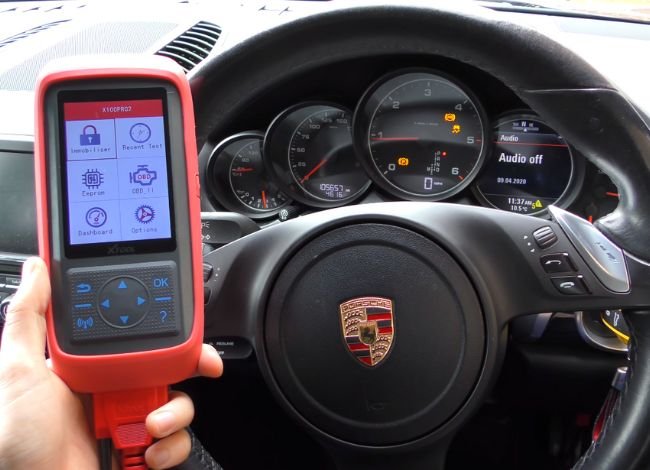Last Updated on April 11, 2025
Tracking your car’s mileage data is crucial—not just for maintenance, but also for insurance evaluations and resale value. The odometer is the device that displays how far your car has traveled and is usually located on the dashboard. However, many drivers confuse mileage (distance traveled) with fuel mileage or fuel efficiency, which is a completely different metric.
Related: 21 Car Maintenance Tips: Every Vehicle Owner Should Know
So the big question is:
Can an OBD2 scanner read or change the odometer reading?
Can OBD2 Read the Odometer? – Yes, But Limited
Can OBD2 Change the Odometer? – No, It Cannot
What is an OBD2 Scanner?
An OBD2 scanner (On-Board Diagnostics II) is a self-diagnostic tool built into most vehicles manufactured from 1996 onward (in the U.S.). Mandated by law, this system monitors the performance of major engine components and emissions systems. OBD2 scanners are commonly used to:
- Read and clear diagnostic trouble codes (DTCs)
- Turn off the Check Engine Light (MIL)
- Access real-time engine data
- Conduct emissions readiness tests
However, reading or changing odometer values is not its primary function, which leads us to the next key point.
Can an OBD2 Scanner Read Mileage Data?
In some cases, yes—an OBD2 scanner can read estimated mileage data. But this reading is often an approximation and not the actual value displayed on your dashboard.
Here’s why:
- OBD2 scanners may use vehicle speed sensor data or fuel injector data to estimate distance.
- Some advanced OBD2 tools and Android apps (paired via Bluetooth) claim to calculate mileage, but the result is not 100% accurate.
- These readings do not pull directly from the odometer, which is stored in a separate memory module and often encrypted for security.
So, while an OBD2 scanner might give you an idea of your trip mileage, it should not be relied upon for accurate or legal mileage data, especially when dealing with insurance or resale.
Can You Change the Odometer Reading Using an OBD2 Scanner?
No—OBD2 scanners cannot change odometer readings.

Here’s why:
- The odometer reading is stored in a vehicle’s ECU (Engine Control Unit) or instrument cluster, which is usually protected against unauthorized modifications.
- OBD2 scanners do not have the access level or authority to alter this data.
- Only highly specialized hardware (used illegally in many cases) can manipulate odometer readings—and doing so is considered fraud in many countries.
So, if you’re thinking about correcting or adjusting your odometer reading via OBD2, it’s not possible—and it’s also not advisable.
How Is Odometer Reading Changed (Not Recommended)?
Though not recommended or legal in many jurisdictions, odometer tampering is typically done using:
- Rollback equipment connected to the car’s digital instrument cluster
- EEPROM reprogramming (modifying memory chips manually)
- Replacing the instrument cluster entirely with another one
These methods are not only unethical but may lead to legal consequences and vehicle devaluation.
Conclusion
While an OBD2 scanner is an invaluable tool for diagnosing car issues, it is not designed to read or change odometer readings accurately. If you’re looking to track your mileage for fuel efficiency or maintenance purposes, use dedicated GPS mileage trackers or refer to your car’s built-in odometer. If you’re also curious whether installing a new engine resets your car’s odometer reading, check out our detailed guide on does the odometer reset with a new car engine for a complete explanation.
For insurance, resale, or legal matters, always rely on the vehicle’s original odometer—not the estimated mileage from an OBD2 scan.
